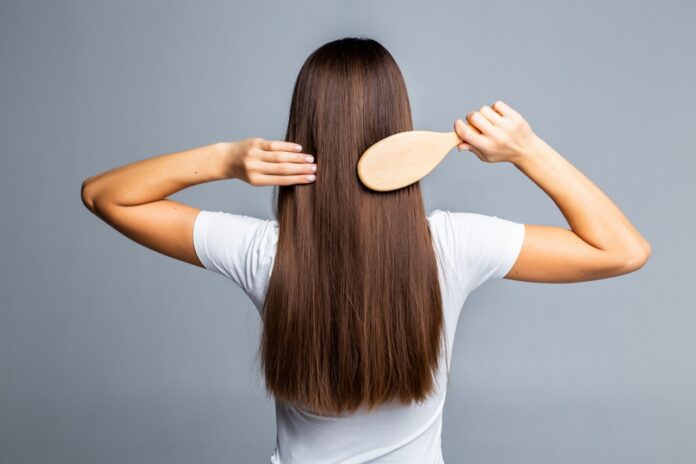The extraction of resources from waste using green chemistry to create items with a lower environmental footprint is becoming more common. Human hair is a biowaste that is abundant worldwide. Yet, it is generally burnt or deposited as solid waste, causing pollution. To prevent land contamination, green chemistry can be utilized to process biowastes.
Hair styling, whether it consists of dramatic updos, elaborate braids, or wild colors, can be a powerful form of self-expression. These strands contain substances that may one day appear in bandages, sunscreens, or other items, in addition to reflecting our personalities.
Researchers have now developed a simple, green procedure for extracting keratin and melanin from human hair for these potential applications without harsh chemicals or excessive waste.
Hair consists of protein filaments with many layers and components. Its structure is derived from the protein keratin found in fingernails, horns, and feathers. Melanin, a collection of pigment molecules in the skin and eyes, gives it its color.
Melanin has antioxidant characteristics and can help protect against UV rays. These properties make the compounds excellent for biological applications; yet, because most wasted hair is cremated or disposed of in landfills, its keratin and melanin remain mostly unused.
It is possible to extract them chemically from hair. However, current techniques can only extract one component at a time or rely on harsh chemicals and laborious steps.
Paulomi Ghosh and colleagues aimed to create a simple process for extracting keratin and melanin from human hair using a reusable, green solvent.
The researchers collected hair samples from local salons, cleaned and sliced them into small slices, and dissolved the combination by interrupting the hydrogen bonds holding the keratin proteins together.
Melanin pigments precipitated and recovered after being heated and placed into a hydrochloric acid solution. The keratin proteins were then collected by dialysis by the researchers. The ionic liquid was recycled and reused in future processes without affecting the yield significantly.
Recovered keratin was compatible with blood, suggesting it might be used in heavy-duty hemostatic bandages. This extraction approach also preserved the melanin’s original structure, which was destroyed in earlier, harsher methods. The team believes melanin might be employed in sun-protective products or films because it has good antioxidative and UV shielding qualities. According to the researchers, this technology might be used to extract functional biopolymers from otherwise wasted materials in a green fashion.
This method extracted keratin and melanin from human hair without harsh chemicals or unnecessary waste.
The American Chemical Society (ACS) is a non-profit organization chartered by the United States Congress to advance the chemical enterprise and its practitioners for the benefit of the Earth and all its people.
It is a global leader in promoting excellence in science education and offering access to chemistry-related information and research through its many research solutions, peer-reviewed journals, scientific conferences, eBooks, and weekly news magazine Chemical & Engineering News.
The CAS division works with global innovators to accelerate breakthroughs by curating, linking, and analyzing the world’s scientific knowledge.
The study was funded by the Government of India’s Department of Science and Technology (DST)-INSPIRE Faculty, the CSIR-Indian Institute of Chemical Biology, the Indian Council of Medical Research, and the Department of Biotechnology.
Journal Reference:
- Ashmita Mukherjee, Shivangi Parhi, et al. One-Pot Extraction of Bioresources from Human Hair via a Zero-Waste Green Route. ACS Omega. DOI: 10.1021/acsomega.3c01428
